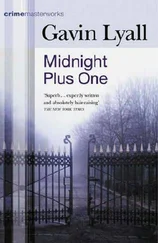“Sit down, Cindy. What did you want to tell me about our sniper? If he is a sniper, to begin with.”
“A man who shoots at someone from a rooftop is certainly…”
“Not necessarily.”
“He killed two men in the same way!”
“ If he’s the one who killed both men.”
“The newspaper said the same make and caliber of cartridge….”
“That could mean a lot, or it could mean nothing.”
“You’re not seriously telling me you think it was a coincidence?”
“I don’t know what to tell you, except that we’re considering every possibility. Sit down, will you? You make me nervous.”
Cindy sat down abruptly and plunked her books on the desktop. For a nineteen-year-old who had seen and heard all there was to see and hear, she looked very much like a nine-year-old at that moment.
“Well,” Cindy said, “ if the same man killed my father and that other man, and if he’s a sniper, then I think you ought to consider the possibility that he may be sexually motivated.”
“We will indeed.”
Cindy rose abruptly and began picking up her books. “You’re putting me on, Detective Carella,” she said, angrily, “and I don’t particularly like it!”
“I’m not putting you on! I’m listening to every word you’re saying, but for God’s sake, Cindy, don’t you think we’ve ever dealt with snipers before?”
“What?”
“I said don’t you think the police department has ever handled a case involving—”
“Oh.” Cindy put her books down again, and again she sat in the chair alongside his desk. “I never thought of that. I’m sorry.”
“That’s all right.”
“I’m truly sorry. Of course. I mean, I suppose you run across all sorts of things. I’m terribly sorry.”
“I’m glad you came up anyway, Cindy.”
“Are you?” Cindy asked suddenly.
“We don’t often get nice bright kids in here,” Carella said. “It’s a refreshing change, believe me.”
“I’m just the all-American girl, huh?” Cindy said with a peculiar smile. Then she rose, shook hands with Carella, thanked him, and left.
The woman walking along Culver Avenue was neither a nice bright kid nor an all-American girl.
She was forty-one years old, and her hair was bleached a bright blonde, and she wore too much lipstick on her mouth and too much rouge on her cheeks. Her skirt was black and tight, and dusted with powder she had spilled on it while making up her face. She wore a high brassiere and a tight, white, soiled sweater, and she carried a black patent-leather handbag, and she looked very much like a prostitute, which is exactly what she was.
In a day and age when prostitutes in any neighborhood look more like high-fashion models than ladies of the trade, the woman’s appearance was startling, if not contradictory. It was almost as if, by so blatantly announcing her calling, she were actually denying it. Her clothes, her posture, her walk, her fixed smile all proclaimed—as effectively as if the words had been lettered on a sandwich board—i am a prostitute. But as the woman walked past, the imaginary back of the sandwich board was revealed, and lettered there in scarlet letters—what else?—were the words: i am dirty! do not touch! The woman had had a rough day. In addition to being a prostitute, or perhaps because she was a prostitute, or perhaps she was a prostitute because of it —God, there are so many psychological complexes to consider these days—the woman was also a drunk. She had awakened at 6:00 a.m. with bats and mice crawling out of the plaster cracks in her cheap furnished room, and she had discovered there was no more booze in the bottle beside her bed, and she had swiftly dressed, swiftly because she rarely wore anything but a bra under her street clothes, and taken to the streets. By 12:00 noon, she had raised the price of a bottle of cheap whiskey, and by 1:00 p.m. she had downed the last drop. She had awakened at 4:00 p.m. to find the bats and mice crawling out of the cracks again and to find, again, that the bottle beside the bed was empty. She had put on her bra and sweater, her black skirt and her high-heeled black pumps; she had dusted her face with powder, smeared lipstick on her mouth and rouge on her cheeks, and now she was walking along a familiar stretch of avenue as dusk settled in the sky to the west.
She generally walked this pavement each night along about dusk, drunk or sober, because there was a factory on Culver and North Fourteenth, and the men from the factory quit at 5:30, and sometimes she was lucky enough to find a quick $4 partner or, if her luck was running exceptionally good, even a partner for the night at $15 in good, hard, American currency.
Tonight she felt lucky.
Tonight, as she saw the men pouring from the factory on the next corner, she felt certain there would be a winner among them. Maybe even someone who would like to do a little honest drinking before they tumbled into the sack. Maybe someone who would fall madly in love with her, the plant superintendent maybe, or even an executive who would love her eyes and her hair and take her home to his large bachelor house in the suburbs of Larksview, where she would have an upstairs maid and a butler and make love only when she felt like it, don’t make me laugh.
Still, she felt lucky.
She was still feeling lucky when the bullet smashed through her upper lip, shattering the gum ridge, careening downward through her windpipe, cracking her upper spine, and blowing a huge hole out of her neck as it left her body.
The bullet spent itself against the brick wall of the building against which she fell dead.
The bullet was a Remington .308.
It is true that in a democracy all men are equal in the eyes of the law, but this does not necessarily apply to all dead men. It would be nice to believe that a detective investigating the murder of a Skid Row wino devoted all his time and energy to the case in an attempt to discover the perpetrator. It would be nicer to believe that the untimely demise of a numbers runner or a burglar occasioned anything but relief, an attitude of “Good riddance” on the part of the police. But there is a vast difference between a murdered millionaire and a murdered criminal. A prostitute, who steals nothing, is nonetheless guilty of a violation, and in the lexicon of the police is a criminal. The death of the Culver Avenue prostitute would have caused little more than slight passing interest, had it not been for the fact that she was slain by a .308-caliber Remington cartridge. As it was, she acquired more status in death than she had ever known in life, either in the eyes of men or in the eyes of the law.
The law is curiously ambiguous concerning prostitutes. The penal law describes prostitution and disorderly houses in detail, but there is nowhere in the code a definition of a prostitute per se. Under the section on prostitution, there are listed:
(1) Abduction of female for purposes of
(2) Compulsory prostitution of women
(3) Compelling prostitution of wife of another
(4) Corroboration of testimony of female compelled or procured
(5) Pimps and procurers
(6) Transporting women for purposes of
Under the section on disorderly houses there are listed:
(1) Abduction of females
(2) Admission of minors
(3) Compulsory prostitution in
(4) Keeping or renting
(5) Sending messenger boys to
…and so on. Some of these crimes are felonies. But nowhere in these subdivisions is there reference to the crime of the prostitute herself. There is only one place in the penal law where love for sale is defined. Curiously, it is in Section 722, which defines disorderly conduct: “Any person who with intent to provoke a breach of the peace, or whereby a breach of the peace may be occasioned, commits any of the following acts shall be deemed to have committed the offense of disorderly conduct.”
Читать дальше












